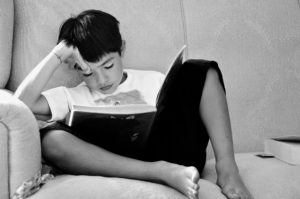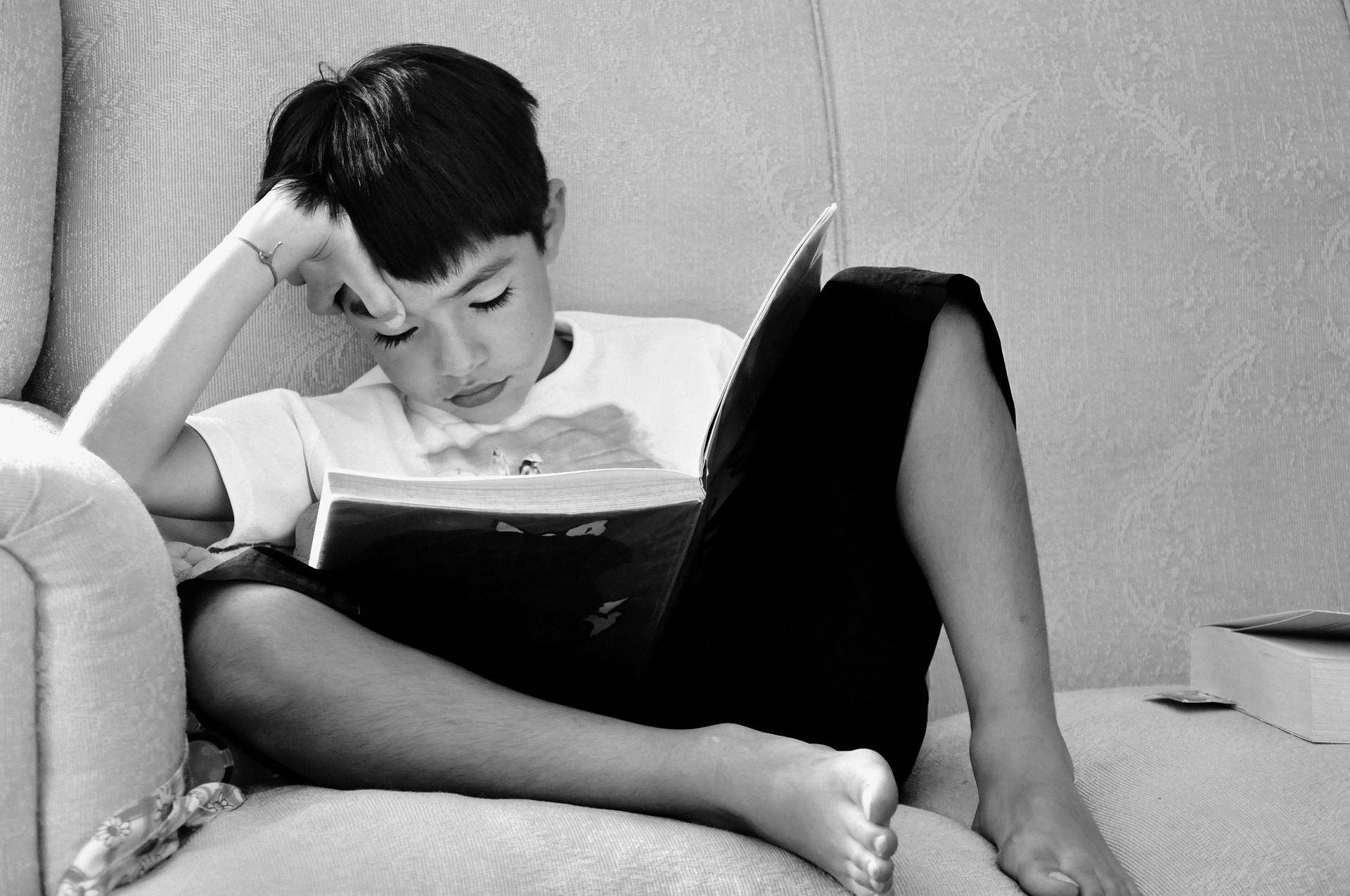 Reading aloud never gets old. Neither does being read to. This works out well for me since I’m a children’s librarian and a large part of my job involves storytimes for kids of all ages. It also has served me well as a mom, where I am the chief bedtime story reader. My daughter has often rejected my poor husband’s attempts to read to her in favor of mine. I try to console him by saying that I am a professional with years of experience reading aloud. Somehow that never seems comforting!
Reading aloud never gets old. Neither does being read to. This works out well for me since I’m a children’s librarian and a large part of my job involves storytimes for kids of all ages. It also has served me well as a mom, where I am the chief bedtime story reader. My daughter has often rejected my poor husband’s attempts to read to her in favor of mine. I try to console him by saying that I am a professional with years of experience reading aloud. Somehow that never seems comforting!
I naively assumed that once my daughter learned to read independently, these nightly read alouds would taper off and be replaced with her own stack of short chapter books that she would read alone. This is ironic, given that in my professional life, I often tell parents to keep reading aloud to children after they learn to read. Children of all ages really do enjoy being read to and I am still not sure why I didn’t follow my own advice. Nevertheless, my daughter had no intention of letting me stop reading to her. She is a morning lark and often reads alone to entertain herself while my husband and I sleep in. But at night, she is not ready to let go of our cozy bedtime reading ritual.
Another piece of professional advice that I often give but avoided following is allowing the child to choose the books rather than the parent. I thought since I work at the library, I would just bring home this mountain of amazing literary choices and my child would be thrilled. Reader, she was not thrilled. In fact, my daughter rejects nearly every book I suggest. Thankfully, her teacher has come to our rescue and does a great job of introducing kids to wonderful stories by reading every day in the afternoons.
As my daughter gets older and we continue to read together, I’ve noticed the books she loves all have one unifying characteristic: a unique ability to capture a child’s true voice and inner emotional life. Many children’s books portray main characters who never express complicated emotions, seem to learn all the right lessons and are just too perfect. Like adults, children are looking for realistic, flawed protagonists who are more than just an amalgamation of stereotypes that only make minor mistakes and immediately learn the right lesson from every situation. Parents and other adults may not always like it, but kids want to read about children like themselves.
Abby Hanlon really nails a child’s true voice with her creation of Dory, the main character in the Dory Fantasmagory series. Dory, the youngest in her family, has a big imagination and a big personality to match. In her tireless efforts to keep up with her older siblings, she often misunderstands their games, gets teased, and misses the lessons her parents and teacher try to impress upon her. Dory’s imaginary friends are just as rambunctious as she is and their games often have Dory mixing reality and fantasy, much to the dismay of the adults in her life. The voice Hanlon creates for Dory really reflects the tug children in early elementary school feel between meeting the expectations of the world around them and the rich, inner life they create to cope.
Ramona Quimby, star of Beverly Cleary’s classic eponymous series, is another mischievous character who is both anxious about growing up but yearns to be more mature like her big sister Beezus. Filled with insatiable curiosity, she unintentionally annoys others around her as she tries to make sense of her world. In Ramona the Brave, Ramona tries to act the part of the mature first grader while still longing for the simpler days of kindergarten. She manages to control her urge to “boing” the curls of Susan, her classmate and nemesis, but can’t quite squash the desire to ruin Susan’s art project when she discovers Susan is a copycat. These school struggles are just as relatable to kids now as they were when Cleary published the title back in 1965.
Horrible Harry in Room 2B by Suzy Kline portrays life in a second grade classroom from a boy’s perspective. While the series narrator Doug, is pretty nondescript, his focus on the antics of his best friend, Harry, provides insight into the inner workings of a child’s mind. Harry is smart, loyal, and eager to help but his infectious energy and ideas often land him in hot water. He’s also more than a little mischievous and is not above taking revenge against classmates who make fun of him. Some of the references in this series are a little dated from the 1980s and 1990s but kids can definitely relate to Harry and Doug’s desire for adventure to spice things up during an ordinary school day.
Attractive book covers and action packed plots can draw kids into a book but relatable, complex main characters keep them interested. Children in stories need to express the same confusion, outrage, jealousy, and all other emotions that real children experience during the growing up process. When you are searching for a good book for a child in your life, instead of asking, “What lessons does this book teach?” it might be more relevant to examine, “How relevant and relatable are these characters to real children?” If this book would appeal to your inner child, it is sure to be a winner.
Kate Tigue is Head of Youth Services at the Morrill Memorial Library. Look for her article in the February 18, 2021 issue of the Transcript and Bulletin.


